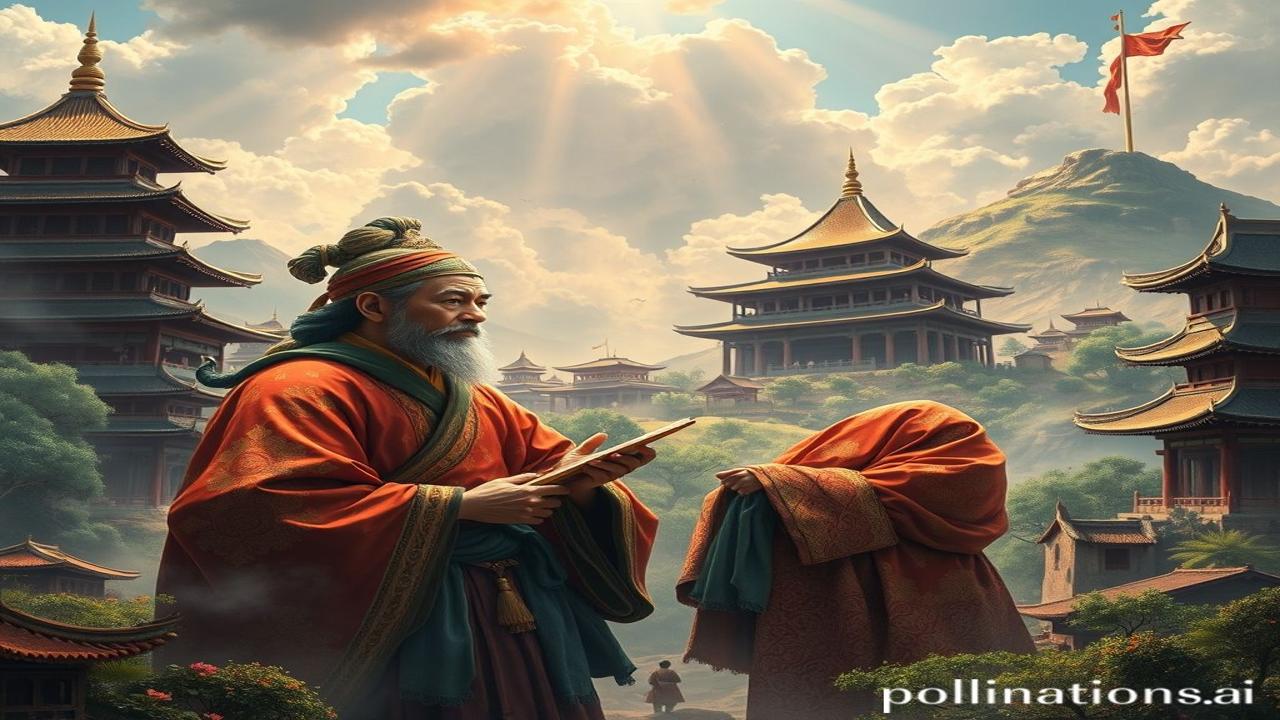Reshmi Dhaage, Doh Dushmano ke Darmiyaan: Unveiling India-China Relations in Ancient Times
Kabhi socha hai, Himalaya ki chotiyaan kya dekh rahi thi jab Bharat aur China ki sabhyataayein dharti par ubhar rahi thi? The whispers of silk routes, the echoes of Buddhist chants, the clashing ambitions of empires – waqt ki dhool mein dabee, yeh kahaniyan aaj bhi saans leti hain. Let’s unearth the untold story of ancient India-China relations, a tale woven with trade, spirituality, and sometimes, the silent tension of neighbouring giants.
Itihasik Bhoomi: The Dawn of Connectivity
What exactly are we talking about when we say “ancient” India-China relations? We’re looking at a period roughly from the 2nd century BCE (before Christ) to around the 15th century CE (Common Era) – a vast stretch of time when these two powerhouses began to interact and influence each other. Imagine the Silk Road not just as a path for goods, but as a channel for ideas, philosophies, and even microbes!
India and China, despite being geographical neighbours, were largely isolated for a long time. The mighty Himalayas acted as a natural barrier. But the lure of exotic goods and the spread of Buddhism slowly paved the way for interaction. Buddhism, originating in India, became a significant bridge, carried by monks and merchants who braved treacherous terrains.
When? Roughly 2nd century BCE to 15th century CE.
Where? Primarily along the Silk Road routes and maritime routes.
Why important? This period laid the foundation for cultural exchange and trade, shaping the identity of both nations. Think about it: without this exchange, how different would our understanding of philosophy or the aesthetics of art be today?
Zameeni Sach: Log aur Jeevan – Traders, Monks, and Emperors
Picture this: Xuanzang, a 7th-century Chinese monk, embarking on a perilous journey to India to collect Buddhist scriptures. He travels through scorching deserts, crosses raging rivers, and battles bandits, all in pursuit of knowledge and enlightenment. His diaries provide invaluable insights into the life and culture of India during that era.
On the other side, imagine Indian traders laden with spices, textiles, and precious stones making their way to Chinese markets. The aroma of sandalwood and saffron mingles with the smell of gunpowder and ink in bustling Chinese cities. These traders weren’t just exchanging goods; they were exchanging stories, customs, and even jokes!
Aur phir, emperors ki baat. Ashoka, the Mauryan emperor, actively promoted Buddhism, sending missionaries to spread the faith, including to China. This act had a profound impact on Chinese society and culture. In turn, Chinese dynasties like the Han and Tang had a keen interest in India’s wealth and knowledge. Political alliances were forged, sometimes broken, but the underlying current of exchange continued.
Dialogue Example:
“Yeh kesar kahan se aaya hai, bhai?” a Chinese merchant asks, his eyes gleaming at the vibrant color.
“Bharat se, mere dost! Bharat se. Yeh Surya ki Roshni mein ugta hai,” the Indian trader replies, a proud smile on his face.
Dharohar aur Pehchan: Echoes in the Present
Aaj bhi, hum India-China ke rishte mein un purani yaadon ki goonj sunte hain. From the shared Buddhist heritage visible in our temples and monasteries to the influence of Chinese silk in Indian fashion, the threads of ancient interaction are still woven into the fabric of our culture.
Consider the influence of yoga and Ayurveda in China, or the popularity of Chinese cuisine in India. These are not just fleeting trends; they are the modern manifestations of a centuries-old cultural exchange. Bharatiyata – the essence of being Indian – incorporates this shared history, acknowledging the enduring connection between our two nations, both in peace and sometimes, in competition.
Mazedaar Tathya ya Bhram-Bhanjak: Fun Fact & Myth-Buster!
Myth: Log samajhte hain ki India aur China hamesha se dushman rahe hain.
Reality: Asli sach yeh hai ki, while there were instances of rivalry and conflict, the vast majority of our ancient relationship was characterized by peaceful exchange and cultural enrichment. Trade, diplomacy, and shared spiritual beliefs were the dominant themes. Think more “co-op” than “call of duty”!
Drishya aur Bhavnaayein: Sensory Overload from the Past!
Imagine standing in the courtyard of Nalanda University, one of the greatest centers of learning in ancient India. The air is thick with the scent of incense and old manuscripts. The sounds of chanting monks echo through the halls. The sun beats down on the red brick walls, warmed by centuries of intellectual activity. This is where scholars from China came to study, to debate, and to absorb the wisdom of India.
Antim Vichar ya Uddharan: A Closing Thought
The story of ancient India-China relations is a reminder that despite differences in culture and political systems, human beings are fundamentally connected. Trade, spirituality, and the pursuit of knowledge can bridge even the widest geographical divides.
“Vasudhaiva Kutumbakam” – The world is one family. This ancient Indian philosophy encapsulates the enduring potential for cooperation and understanding between India and China, a potential that we must strive to realize in the present and the future.
